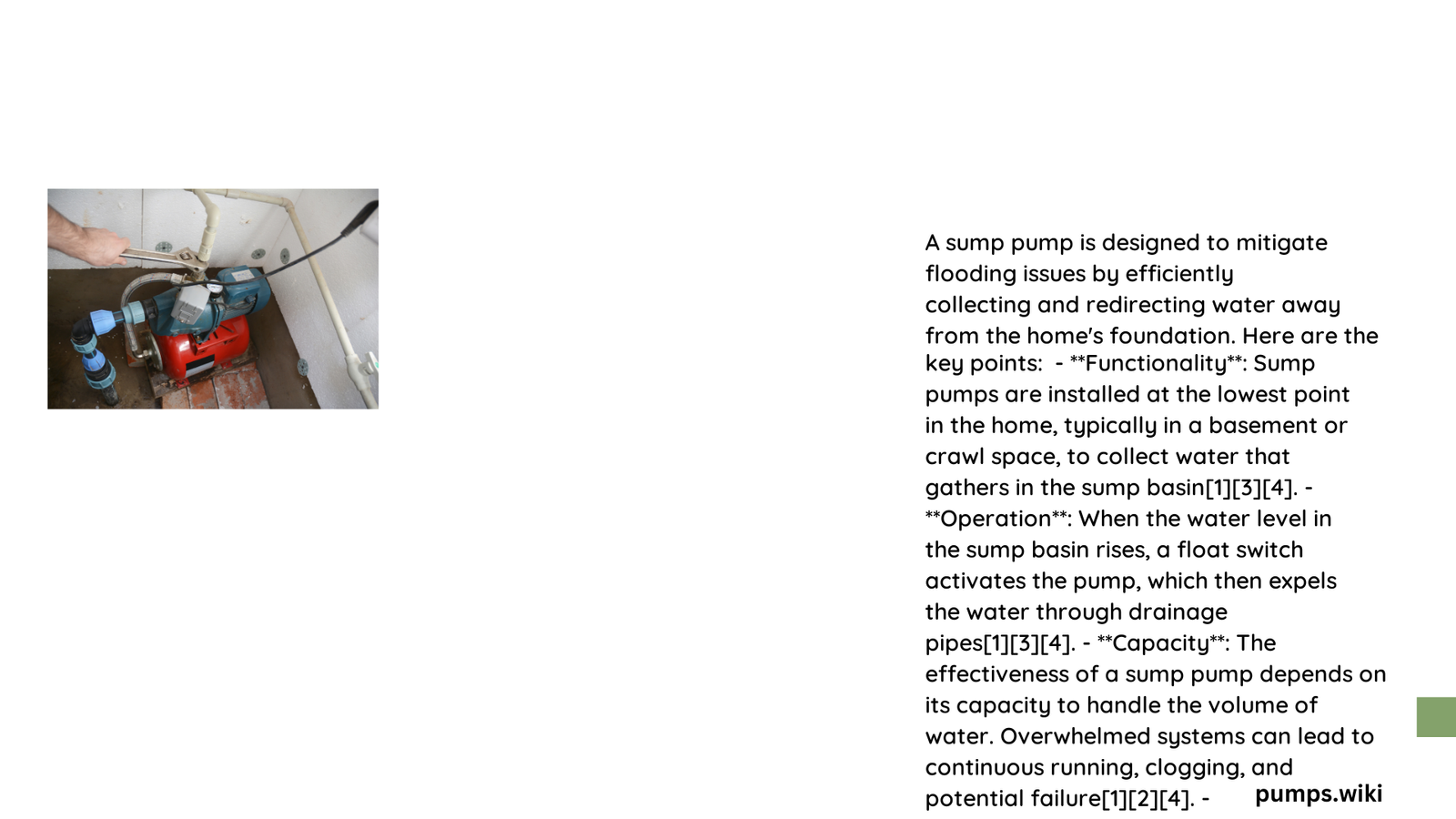A sump pump is a critical home protection device designed to mitigate potential flooding risks by automatically detecting and removing excess water from basement or crawl spaces. Homeowners in water-prone regions rely on these systems to prevent structural damage, protect valuable belongings, and maintain a dry living environment. Understanding their functionality and necessity can save thousands in potential water damage repairs.
What Triggers Sump Pump Water Management?
Are Specific Conditions Signaling Sump Pump Need?
Several critical conditions indicate the necessity of a sump pump installation:
| Condition | Risk Level | Recommended Action |
|---|---|---|
| Previous Basement Flooding | High | Immediate Sump Pump Installation |
| Annual Rainfall > 30 inches | Moderate | Evaluate Sump Pump Requirements |
| Low-Lying Property Location | High | Professional Water Management Assessment |
| Clay or Water-Retaining Soil | Moderate | Consider Drainage Solutions |
Key Flooding Risk Indicators
- Consistent basement moisture
- Water stains on foundation walls
- Musty odors in lower levels
- Visible mold or mildew growth
- Cracks in foundation walls
How Do Sump Pumps Prevent Water Damage?
Sump pumps operate through a sophisticated mechanism:
- Water Collection: A designated pit (sump basin) collects groundwater
- Automatic Activation: Float switch triggers pump when water reaches critical level
- Water Redirection: Powerful motor pumps water away from foundation
- Continuous Monitoring: Provides 24/7 protection against potential flooding
What Performance Metrics Matter?
Critical sump pump performance factors include:
- Gallons Per Hour (GPH): Indicates water removal capacity
- Vertical Lift: Maximum height water can be pumped
- Motor Power: Determines efficiency in water extraction
- Battery Backup: Ensures operation during power outages
Which Pump Type Offers Best Protection?
Submersible Sump Pumps
- Quieter operation
- More efficient water removal
- Better debris handling
- Higher initial investment
Pedestal Sump Pumps
- Lower cost
- Easier maintenance access
- Longer motor lifespan
- Slightly noisier operation
What Maintenance Ensures Optimal Performance?
Recommended maintenance practices:
- Quarterly pit cleaning
- Annual pump inspection
- Check valve functionality test
- Battery backup system verification
- Discharge line clearance
When Should Replacement Be Considered?
Replace your sump pump if:
– Age exceeds 7-10 years
– Frequent cycling occurs
– Unusual noises during operation
– Reduced pumping efficiency
– Visible rust or mechanical wear
Conclusion

A sump pump doesn’t just assume flooding issues—it actively prevents them through intelligent water management. Proactive installation and maintenance can save homeowners significant repair costs and protect property integrity.
